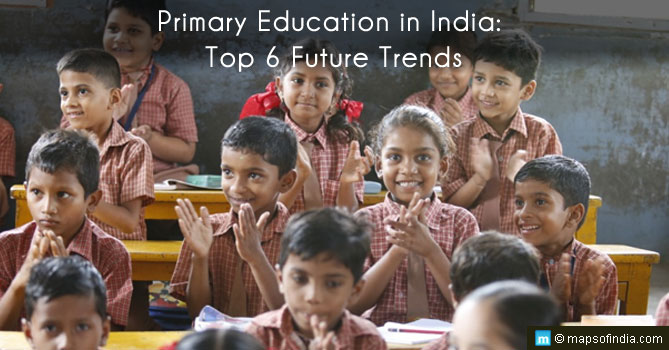India has a population of around 1.37 billion (as per recent UN report) currently and the largest demographic share is held by those under 25 years. While 67 percent of the population still lives in rural India, the rural literacy rate is 69 percent (far below the world average of 86 percent). That’s why education is the most vital sector in India. When it comes to education, primary education is the most important part because it forms the basic stage of formal education.
The advent of technology and years of effort will bring in the coveted change in primary education in the coming years. Use of technology and change in teaching/learning methods vouch to make primary education more interesting and practical.
Now, let’s check the top 6 future trends in primary education in India:
1. Use of Technology
In the future, there will be a spike in use of technology in providing primary education:
- Primary schools will witness increase in the number of smart classes such as Google classrooms.
- Another important innovative technological use in education is 3D printing. This technology helps in shaping and forming the imagination of young and creative minds. When the primary school students view the real-life 3D models, they can relate to the surroundings, giving an influx to creativity.
- Virtual reality (VR) will be used more extensively in the future. It will provide children with a more real-life experience, helping them to understand/learn faster, and remember for a longer period of time.
2. Education Technology Startups
Primary education sector is witnessing a paradigm shift in its approach, thanks to the innovations brought in by edu-tech startups. They not only offer online courses but also innovative technological advancements including e-learning.
Some of the education technology startups that are changing the primary education sector include Udemy (foreign startup), Khan Academy (not Indian but highly popular), and many more. In the future, India will see more startups joining this race. Kids get fascinated by technology and that’s why educational technology startups are here to stay.
3. One-To-One Mentoring
Primary schools witness a shortage of teachers. The student-teacher ratio is highly skewed, witnessing a constant fall. In such a scenario, mentorship is the best possible solution both in terms of social and emotional benefits (Komosa-Hawkins report, 2012). Mentorship concept has the potential of reshaping primary education in the future.
4. Fewer Dropouts
One of the major reasons of school dropouts is the lack of education or illiteracy among parents. This phenomenon is most prevalent in rural, semi-urban, and poor localities in the urban areas. Literacy rate is rising in India. In the future, more literate parents will give same importance to education and their family’s daily income. Once this happens, the parents will prefer sending children to schools than farms or other daily labor works.
5. Game Based Learning
Game based learning process is already revolutionizing the K-12 education sector. This new, interactive, and interesting learning method is providing children with an environment to which they can relate to easily. Game-based learning is revolutionizing the education world products, helping to create the next generation that is better self-trained.
6. Revival of Indian Languages
A wide range of languages are spoken in India. However, most of these languages have sprung up from ancient/classical languages such as Sanskrit, Tamil, Telugu, Kannada, Malayalam and Odia. In the coming future, Indian primary education will again provide due importance to these languages along with other national/regional languages. Revival of Indian languages will help preserve the “linguistic pluralism” of India.






